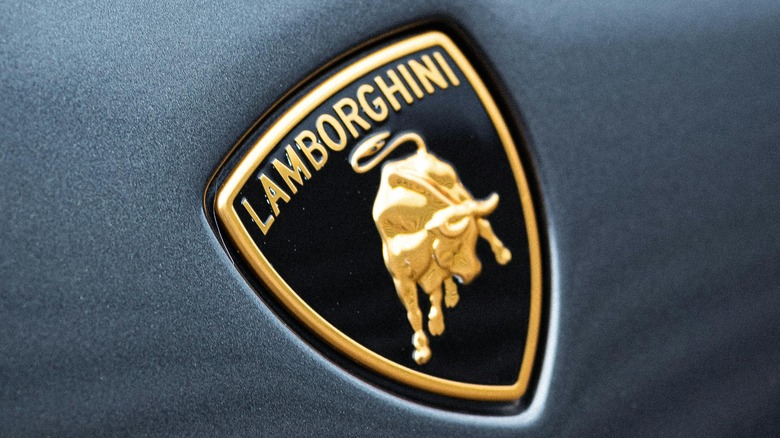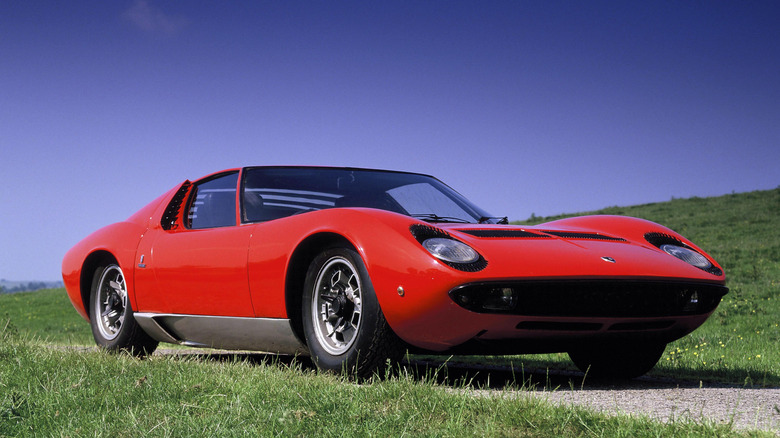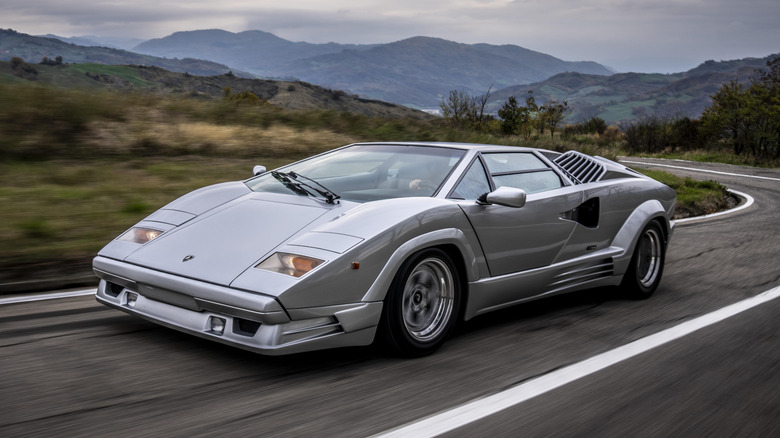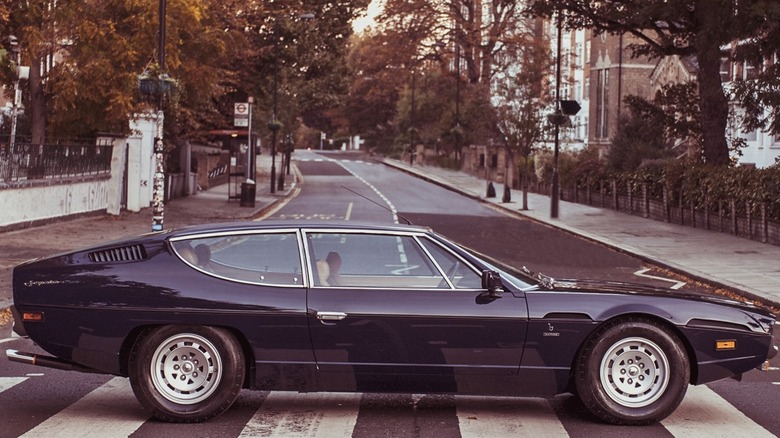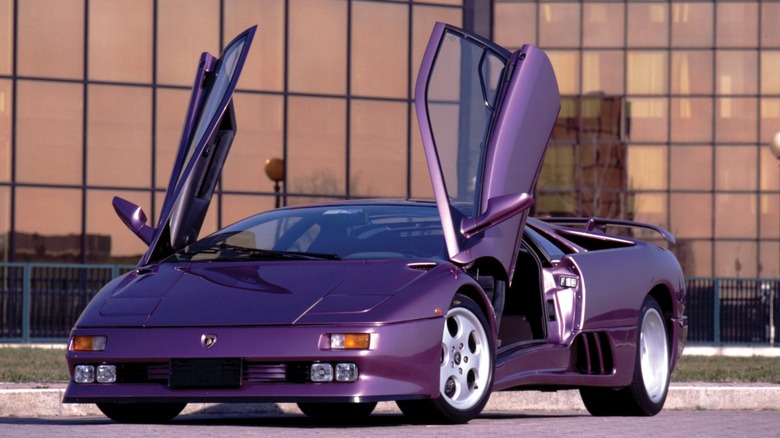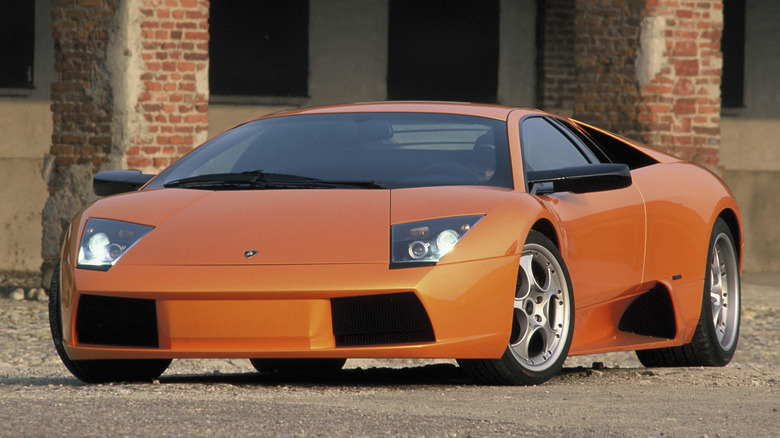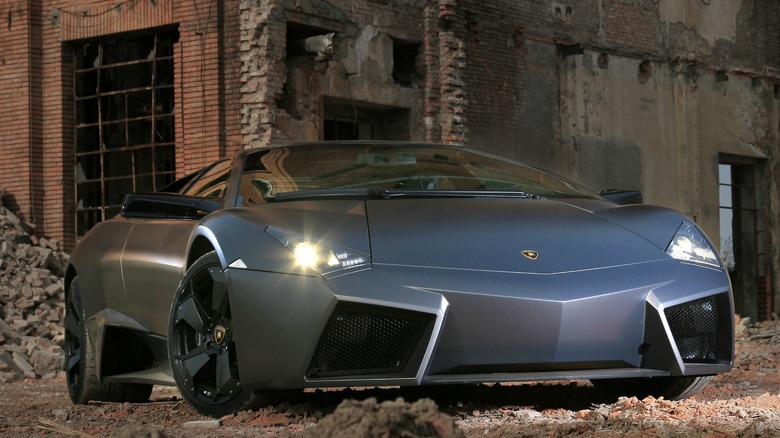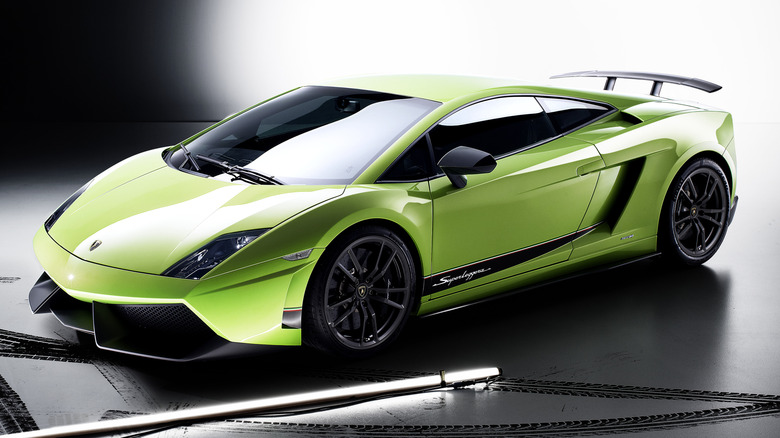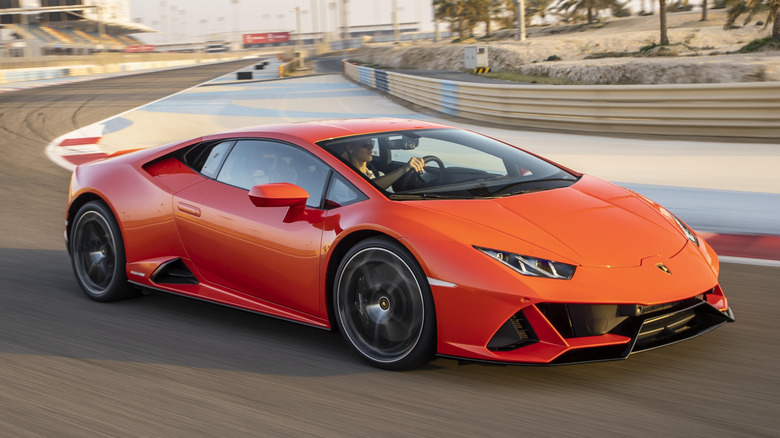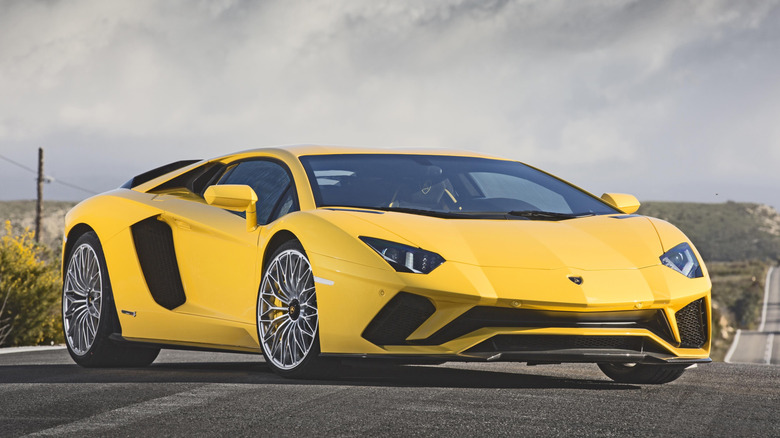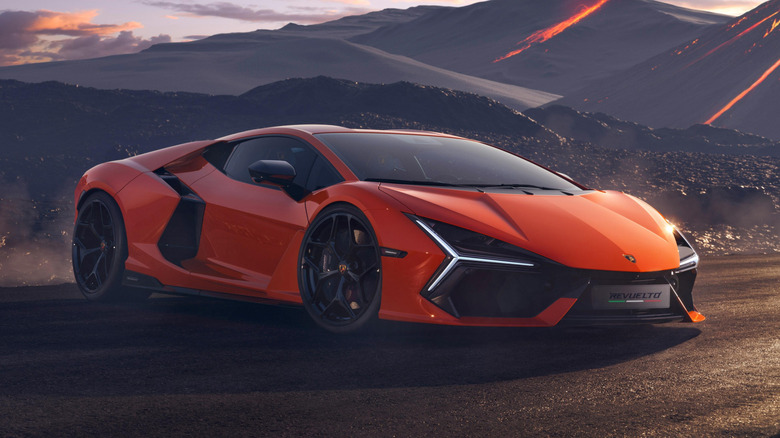10 Iconic Lamborghini Car Names (And What They Mean)
If there's one car brand with a great track record of evocative names, it's Lamborghini. Barring the 350 GT and 400 GT, Lamborghini's offerings have drawn from various aspects of life, from expressions of wonder in the Countach to the periodic table in the ultra-limited Sesto Elemento. But one realm that's proved particularly fruitful for Lamborghini is that of the bullring, with the vast majority of the Italian automaker's cars drawing inspiration from bulls and bullfighting history.
From the pioneering Miura to its modern-day hybrid flagship, the Revuelto, the past six decades have seen Lamborghini draw a long line of classic, iconic, and instantly recognizable car names from the world of bullfighting. The company's often outrageous creations get equally striking names, giving them that extra bit of spice to set them apart from those of fellow Italian marque — and long-time rival — Ferrari.
If you've ever wondered where Lamborghini gets its names from and what they mean, you've come to the right place. Here are 10 classic Lamborghini car names and their origins, with a bit of history thrown into the mix.
Lamborghini Miura
We start with the car that started it all. The Miura wasn't the first-ever Lamborghini — that honor belongs to the often-overlooked 350 GT from 1964 — but it's arguably the car that put the upstart Italian marque on the map. The Miura debuted at the 1966 Geneva Motor Show and caused an immediate stir thanks to its Bertone-designed bodywork, a radical departure from the more conventional grand tourers that Lamborghini had built up until then.
The Miura's significance is such that it's often hailed as the first-ever supercar, although Mercedes-Benz's 300SL Gullwing from around a decade earlier probably has a strong claim on that title as well. Regardless of whether it was the first supercar, the Miura has one other unassailable first under its belt. It was the first Lamborghini to have a name derived from bullfighting, moving away from the uninspiring 350 GT and 400 GT names of the company's previous two cars to embrace a much more exciting naming scheme — one that the company has continued to this day.
More specifically, the Miura's name derived from a breed of Spanish fighting bulls raised by Don Eduardo Miura Fernandez. But Ferruccio Lamborghini's links to Don Eduardo involved more than just a name. Mr. Lamborghini himself took the fourth production Miura to Don Eduardo's estate back in 1966 to show to the car's namesake. Miura's bulls would continue to be a fruitful source of model names until the modern day, but it all started with this genre-defining supercar.
Lamborghini Countach
Ferruccio Lamborghini's time as the sole owner of the eponymous automaker was short-lived, with the Italian selling a controlling 51% stake in his company to Swiss businessman Georges-Henri Rossetti in 1972. But before he relinquished complete control, he managed to oversee the creation of the Lamborghini Countach — one of the best Lamborghinis of all time.
The Countach debuted at the 1971 Geneva Motor Show, retaining the Miura's mid-engined V12 layout but with a much more radical and angular Marcelo Gandini design. The Countach took a few years to enter production, with the LP 400's assembly lines only kicking into action in 1974. The wait was worth it, though, as Lamborghini would continue building the Countach for the next 16 years, releasing ever more powerful and extravagant revisions, including one of the rarest production Lamborghinis of the 1980s in the ducted, winged, and flared-out Countach 5000 QV.
But while the Countach's production history is straightforward, the origins of its famous name are a bit less so. While accounts agree that the name is a rendering of a Piedmontese expression of amazement (essentially making it the Lamborghini Wow), the source of the expression isn't so clear. Designer Gandini claims that the name came from a profiler working on the car, while former Lamborghini test driver Valentino Balboni alleges that the name came from a security guard who uttered the expression upon seeing a scale model of the then-unnamed supercar. Will we ever know the truth? Unlikely, but that doesn't take away from the fact that it's a great name and a legendary car.
Lamborghini Espada
Lamborghini released a couple of grand tourers that carried on the legacy of the 350 GT and 400 GT. One of these was the Espada, Lamborghini's first-ever four-seater powered by a front-mounted example of the same flagship 3.9-liter Lamborghini V12 that defined the Lamborghini Miura from a few years earlier.
While Lamborghini's earlier grand tourers may not have the supercar cachet of the Miura or Countach, one could argue that they're closer to what Mr. Lamborghini himself wanted. Ferruccio Lamborghini established the company to build the best grand tourer possible, and the Espada was probably the closest his company ever got to that ideal. It was fast, stylish, and luxurious in the ways a grand tourer should be, although sub-par workmanship did disappoint contemporary reviewers. It was a hit, too, selling 1,226 units over 10 years — not bad at all compared to cars like the Miura, of which Lamborghini only sold 765.
The Espada shared more with the Miura than its engine, though. Its name was also another nod to bullfighting, albeit one from the other side of the equation. While the Miura and many other Lamborghinis would draw their name from the bulls, the Espada name referred to the sword that bullfighters used to kill the bull — with the word itself being Spanish for "sword."
Lamborghini Diablo
The Espada was a great grand tourer, but let's be real: Supercars are what everyone's really interested in. So, let's head back into the megabucks world of mid-engined Lamborghinis with one of the most recognizable supercars of the 1990s, the Lamborghini Diablo.
First conceived of in 1985 as Project 132, the Diablo was the company's replacement for the Countach, sharing its predecessor's mid-engined layout and high performance but swapping the later-era Countach's busy ducts and wings with a cleaner aesthetic. The latter came via Marcelo Gandini again, although Chrysler — which acquired Lamborghini in 1987 — put the finishing touches on Gandini's design, roping in Dodge Viper designer Tom Gale to create the final shape we all know and love today.
The Lamborghini Diablo debuted in 1990 with a 5.7-liter V12 capable of 485 horsepower and 427 lb-ft of torque under the hood, which could propel the Diablo to a claimed top speed of 203 mph — allegedly enough to make it the fastest production car in the world in 1990. Lamborghini's test also showed that the new supercar could hit 62 mph in 4.1 seconds. Not for nothing, then, was the car named after a particularly frisky 19th-century fighting bull from the Duke of Veragua's stables. But, yes, the name is also Spanish for "devil," although the car was anything but devilish. Later all-wheel-drive iterations of the supercar were somewhat easy to handle despite the extra power, showing that threatening namesakes need not result in an intimidating car.
Lamborghini Murciélago
The Diablo was Lamborghini's flagship V12 supercar throughout the 1990s, but there was no way that it was going to last any more than a year or two into the new millennium. Times (and Lamborghini's ownership) had changed, and the company would need a new V12-powered flagship. Enter the Murciélago, which debuted at the 2001 Frankfurt Auto Show and brought the Diablo feeling into the 21st century with even smoother, sleeker lines and a helping of German engineering philosophy.
Like its predecessor, the Murciélago (Spanish for "bat") drew its name from the folklore of Spanish bullfighting. In this case, the bull Murciélago was allegedly one that managed to survive the trials and tribulations of the bullring, after which it was given to Don Antonio Miura. Miura then created his breed of Miura bulls from Murciélago — thus, the name was also a nod to Lamborghini's first-ever supercar, which bore the name of Murciélago's progeny.
The Murciélago didn't just look like a continuation of the Diablo. It also shared many of the old supercar's basics but tried to be a bit more civilized — insofar as a 500-plus-horsepower V12 supercar can be civilized — than the Diablo. This was likely the result of Volkswagen Group's ownership of Lamborghini, injecting some German practicality into the mix. The Murciélago's all-new 570-horsepower V12 delivered its torque in a smooth thrust from much lower revs than the previous V12, while the driving experience was much friendlier than before thanks to better ride quality and a much-improved interior.
Lamborghini Reventón
Lamborghini made its name with its production supercars, but the company has also produced a range of limited-edition supercars that are even pricier and more exclusive than its already expensive standard models. One such example was the Lamborghini Reventón, a mid-2000s take on the Murciélago that made that car look like a boring daily driver.
The Reventón shared the basic mechanicals with the 650-horsepower Murciélago LP640 but separated itself from the production model with radical new styling. The composite carbon fiber body retained the basic shape but was bedecked with fighter-jet-inspired scoops and angles that wouldn't have looked out of place on the 1980s Countach. Where the Murciélago was a smoothed-out take on Lambo heritage, the Reventón resurrected the sense of visual drama that had characterized the marque's '80s and '90s offerings, just updated for the new millennium.
Lamborghini built just 20 examples, each costing a cool 1 million euros (about $1.5 million in today's money, accounting for inflation). As for the name, you likely won't be surprised that Reventón was initially the name of a fighting bull. But, unlike the other bulls that gave their name to Lamborghinis, this particular bull had a body count. It killed bullfighter Felix Guzman in 1943, thereby securing its place in bullfighting lore. The name also fittingly translates to "explosion" or "burst" (as in a burst tire), making it a suitably extreme name for an extreme car.
Lamborghini Gallardo
Lamborghini in the 21st century was quite a different proposition from the old days. Ensconced firmly within the cossetting embrace of the Volkswagen Group, 2001's Murciélago married hot-blooded V12 power with German sensibility, setting the stage for the next few decades' worth of vehicles. One early example was the Gallardo, which debuted in 2003 as the marque's first-ever V10-powered vehicle.
The baby Lambo Gallardo — arguably one of Ferdinand Piëch's most iconic achievements — was not an entirely new concept. Lamborghini had experimented with V8 and V10 engines as early as the late 1980s, but it wasn't until Audi took the reins of Lamborghini that the concept started taking shape. The result was a compact car that married elements of Lamborghini history with some not-insignificant Ferrari influences — designed by the new Lamborghini Centro Stile — packing a 5.0-liter, 90° V10. The V10 made 500 horsepower and 376 lb-ft of torque and, as with the Murciélago, sent power to all four wheels.
While the V10 took Lamborghini in a bold new direction, the Gallardo's naming stuck close to company tradition, drawing from a breed of Spanish fighting bulls. Lamborghini's decision to release a V10-powered car proved to be a smart move. The company sold 14,022 Gallardos over 10 years and multiple iterations. This is quite impressive for a car that cost more than $200,000 in its heyday, and good enough to make it the bestselling Lamborghini model by the time it was discontinued in 2014.
Lamborghini Huracán
As impressive as the Gallardo's sales achievements were, its successor would outperform it and then some. The Lamborghini Huracán sold 14,000 units in half the time it took the Gallardo, breaking the 20,000-unit barrier in 2022.
The Hurácan took its name from a hard-fighting 19th-century Spanish bull from the Conte de la Patilla breed, continuing the naming lineage inspired by bullfighting that characterized its predecessors. The name also belonged to an otherworldly deity, namely a storm god from Mayan mythology, who likely would have approved of the Huracán LP 610-4's 601 horsepower and 413 lb-ft of torque. Like Lamborghini's Audi-era supercars, though, the Huracán's potentially frightening namesakes were not portents of the new baby Lambo's behavior on the road.
Lamborghini pushed even further into normalcy with the Huracán, aiming to combine high-end luxury and high performance into one package. The company broadly succeeded, too, with reviewers appreciating its more accessible handling and more refined overall package, aided by an all-new seven-speed dual-clutch transmission that was much more agreeable than the Gallardo's six-speed automatic. None of this came cheap, of course, as we found out during our test of the $300,000 2023 Lamborghini Huracán Tecnica, but its excellent engine and daily driver-worthy nature went some way in explaining why more than 20,000 well-heeled petrolheads the world over chose to add a Huracán to their collections.
Lamborghini Aventador
Before the Huracán came the Aventador, Lamborghini's successor to the Murciélago. Debuting at the 2011 Geneva Auto Show, the Lamborghini Aventador LP 700-4 (to give it its full name) was a wholesale evolution of the former flagship, bringing more power and tech than its predecessor.
The mid-mounted engine bay was home to a clean-sheet, 6.5-liter aluminum V12 capable of revving up to 8,250 rpm that made 700 horsepower at full tilt. Maximum torque was also impressive, with the original Aventador producing 509 lb-ft. Lamborghini also debuted its first ISR (Independent Shifting Rods) transmission with the Aventador, which was a single-clutch automated transmission that was smaller and lighter than a conventional manual and allowed the Aventador LP 700-4 to hit 60 mph in an astounding 2.8 seconds.
The transition from the Murciélago to the Aventador wasn't just one of extra power and performance. Lamborghini engineers also pushed to make the Aventador easier to drive, with reviews praising its more refined engine and overall more comfortable experience — worlds away from the Lamborghini of old. But what didn't change from the days of the Miura and Diablo was the naming scheme, of course. Lamborghini named the Aventador after a bull that fought in 1993 and whose bravery earned it the Trofeo de la Peña La Madroñera that year. Like the Huracán, the Aventador was a hit, and the 10,000th Aventador left the factory floor in 2020. Lamborghini discontinued the Aventador in 2022, sending it off into the sunset with the Aventador Ultimae, one of the fastest V12-powered cars ever.
Lamborghini Revuelto
We end our list with Lamborghini's newest halo car and an intriguing portent of things to come in the world of high-end supercars. The Revuelto debuted in 2023 as the company's first plug-in hybrid. Its marriage of a traditional Lamborghini V12 and electric motors marked the brand's entrance into a market space it called the high-performance electrified vehicle (HPEV).
Electrification brought with it the potential for massive power — as the most powerful SUVs and their 1,000-horsepower outputs show — and the Revuelto lived up to that potential and then some. The L545 V12 that powers the current flagship is all-new and makes 814 horsepower and 535 lb-ft of torque, more than any of its previous V12s. That alone would make the Revuelto a very potent supercar, but Lamborghini complements the V12 with three electric motors for even more grunt. The final result is 1,001 horsepower and 1,044 lb-ft of torque, good for an official 0-to-60 mph time of 2.2 seconds.
The 2024 Lamborghini Revuelto is undoubtedly quite bonkers, as we found out when we put it through its paces. Befitting the Revuelto name, which the company lifted from a particularly "wild" 19th-century fighting bull, according to Lamborghini president Stephan Winkelmann (via CarSales). But it's also the Spanish word for "mixed up," quite a suitable choice due to its mixed-up hybrid drivetrain. Unfortunately, it's also the word Spaniards use for scrambled eggs. Not that there's anything wrong with scrambled eggs, mind you, but it's perhaps not the best look for a bleeding-edge hybrid V12 supercar... or maybe it is?
